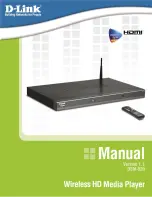
9
2
2.2. Terminal Wiring
Warning
Enforced
• Perform wiring work only after turning off power of the equipment to be connected and this product.
There is a risk of internal circuit damage due to short-circuit or electrical shock.
• Screw-less terminal blocks are used in this product; be sure to use wires which characteristics such
as wire type, wire diameter, and strip length are described in this manual. Failure to do so may
cause contact failure, heat generation and loose wires, since the wire is not securely connected.
• Be sure to insert the entire conductive part of the wire. If a stranded wire is sticking out from the wire
inlet, or a bare wire touches the case, it may cause failure and possible fire to the main unit by short
circuiting.
•
Pay attention to avoid wrong connections, a possibility of fire or damage may result.
Caution
Enforced
• Do not push the actuator part of the terminal block too hard. Doing so may result in the damage or
failure of the terminal block and main unit.
• After completing the wiring, make sure that there are no loose, disconnected or bare lead wires.
2.2.1.
Output Terminal Wiring
Wire the output terminal according to the following steps.
[Wiring Method]
1.
Use a minus driver to push in the tab of the control unit’s terminal buss slot.
2. Insert a signal line lead wire into the slot. (Keep pushing the tab while inserting)
3. Release the minus driver to lock the lead wire in place.
Applicable Wires
Solid Wire: Diameter 0.4 mm to 1.2 mm (AWG26 to AWG18)
Stranded Wire: Diameter 0.2 mm
2
to 0.75 mm
2
(AWG24 to AWG20)
* Single wire diameter shall be 0.18 mm or more for stranded wire.
Wire Coating
Strip Length
9mm
Suitable Actuator Tool
Width of flathead screwdriver bit: 1.5 to 2.5 mm
Thickness of bit: 0.5 to 0.7 mm
Caution
• Do not connect AC power to the Output Terminal Block. Failure to comply may result in a
short-circuit and fire.
•
Use the Output Terminal Block within the contact’s rated capacity. Failure to comply may
result in malfunction and possible fire.
•
If the inrush load current exceeds the contact’s rated capacity, scorching and
welding of
the contacts may occur. Therefore, do not apply such a load.
Rated Contact Capacity
DC30V 3A
②
①
③










































